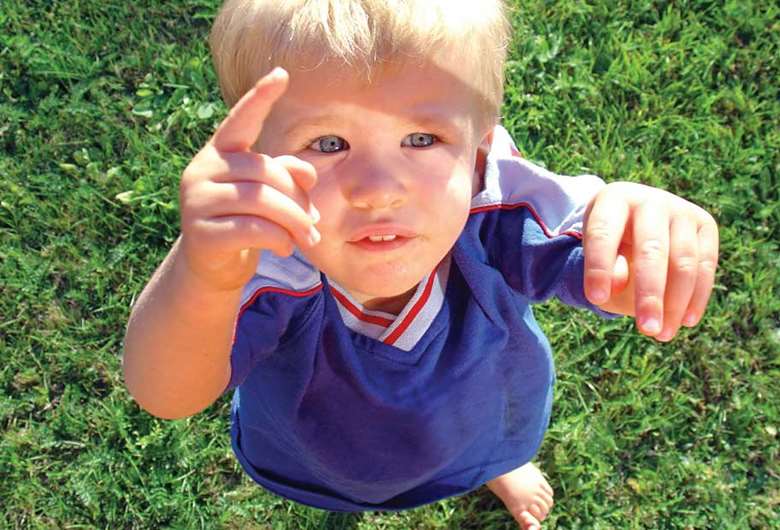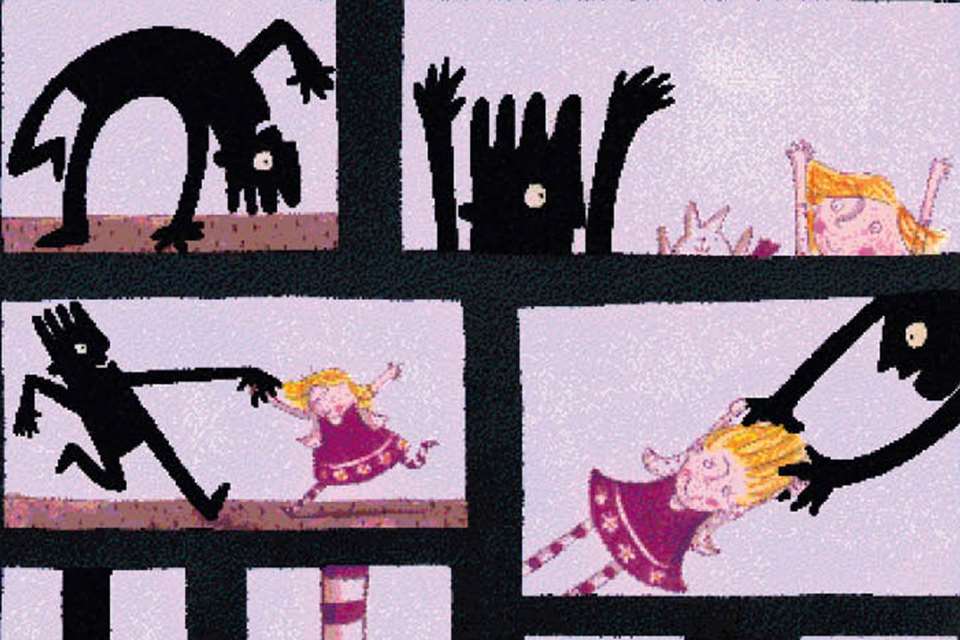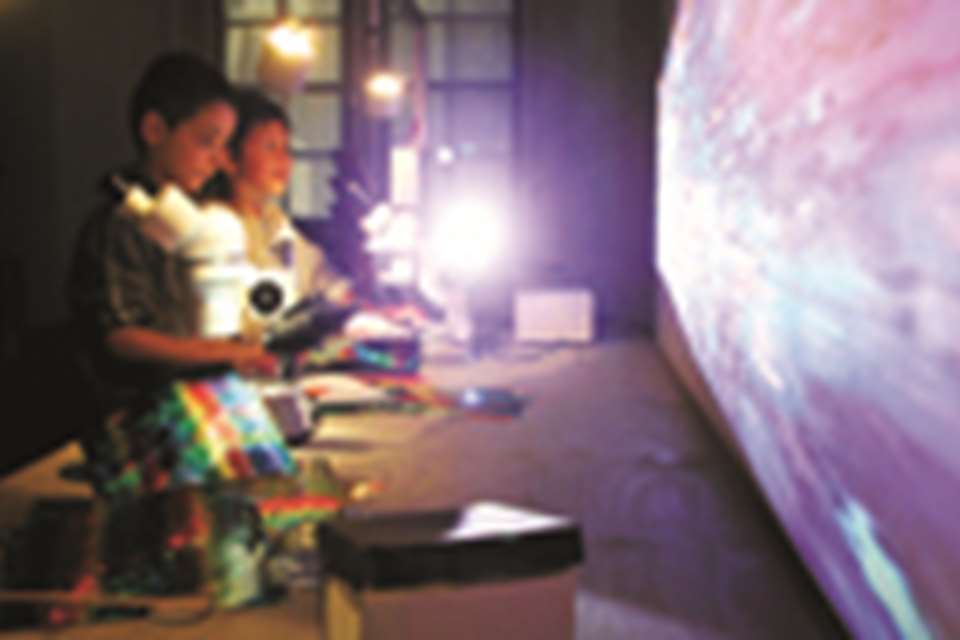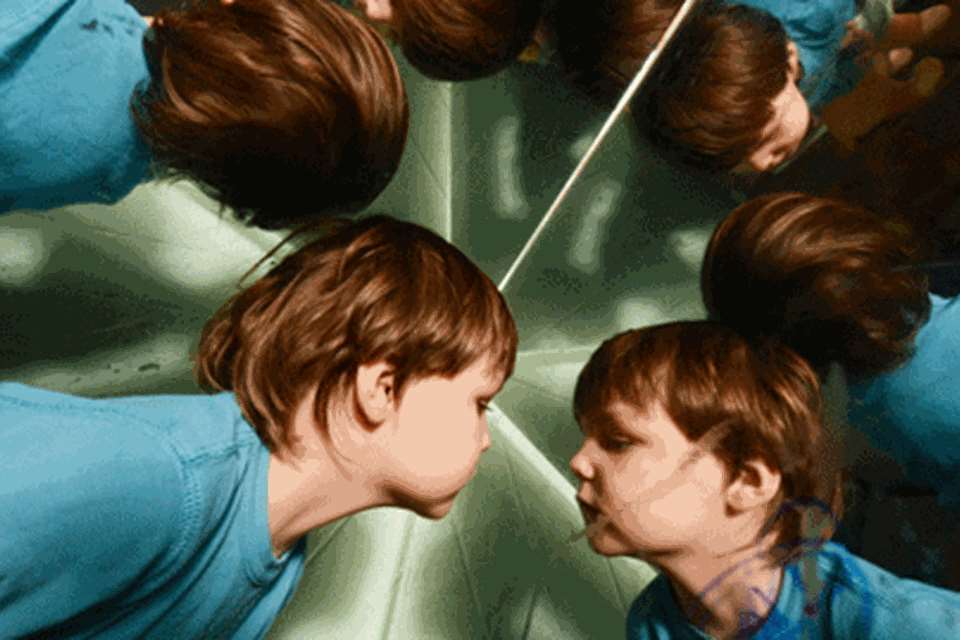Enabling Environments: Let's explore... the sky
Ruth Thomson
Monday, January 13, 2014
With so many different aspects to explore, the sky is an excellent focus for imaginative play and learning, says Marianne Sargent.

Anyone who has led a group of children across an outdoor space will be familiar with the need to remind them to look where they are going. Young children spend a great deal of time with their eyes raised to the sky, tracking aeroplanes and tracing birds as they dart in and out of view. The following activities give children the perfect excuse to gaze up at the blue and stretch their imaginations.
UP IN THE CLOUDS
Read Cloudland by John Burningham. It is about a little boy who slips and falls off a cliff into the clouds. He joins the Cloud Children as they jump through the clouds, swim in the rain and walk on aircraft trails. Use the story as inspiration for an imaginative adventure in the clouds.
Adult role
Create a cloudy landscape for the children to visit to have their own adventure:
- Cover the floor of a large space with crash mats to make a soft surface.
- Cover the mats with white pillows, cushions and duvets.
- Create lumps and bumps by putting large beanbags under the duvets.
- Take the children in small groups to the clouds and let them explore. Ask them how it feels to walk on the clouds.
Change the weather:
- Cover the white cushioning with grey sheets and duvet covers.
- Turn the lights down to make it darker.
- As the children are exploring, flicker the lights to create lightening and play the sound of thunder in the room.
- Ask the children what it feels like to be inside a thunderstorm.
Sit down together and make up stories about adventures in the clouds.
Learning opportunities
PD: Moves confidently in a range of ways, safely negotiating space.
CL: Uses language to imagine.
EAD: Begins to make-believe by pretending.
SKY HIGH
Find out about the different types of aircraft that frequent our skies, then build some models and fly them.
Adult role
- Take the children outside on a clear day. Lie on the floor and watch the sky. What can the children see?
- Take the children to an aircraft museum such as the Royal Air Force Museum in London or the Yorkshire Air Museum in York.
- If at all possible, take the children to a place where they can watch paragliders or hot air balloons. If not, show them some footage of unusual aircraft from the internet.
- Use books to learn about different types of aircraft. Look at how they are built and how they work.
- Provide the materials for the children to make their own model aircraft. Make paper aeroplanes, experiment with making hot-air balloons, and make mini paragliders and parachutes.
- Set up somewhere supervised, safe and sturdy for the children to stand up high and throw or drop their aircraft to test them.
- Talk about the designs. Ask the children to explain what they have made and why they have chosen certain materials. Is there something they could do to improve their designs?
Learning opportunities
PD: Handles equipment and tools effectively.
CL: Uses talk to organise, sequence and clarify thinking and ideas.
UW: Talks about why things happen and how things work.
WHY THE SUN AND THE MOON LIVE IN THE SKY
Read the African folktale Why the Sun and the Moon Live in the Sky by Elphinstone Dayrell and Blair Lent and use it as a springboard for some sun and the moon craft activities.
Adult role
Help the children make sun mobiles:
- Find some photographs of the sun on the internet. Show them to the children and explain that it is never safe to look directly at the sun because it will damage their eyes.
- Ask the children to describe what they can see in the pictures. What colours can they see? Is the image bright or dull? What do they think the sun is made of? Why?
- Explain that they are going to make some sun mobiles. Ask the children which craft materials they need to make little suns. Encourage them to think of materials that will create bright, shiny, shimmering effects.
Help the children make a small-world moon landscape:
- Show the children some pictures of the moon. Use an information book such as Sun, Moon and Stars by Stephanie Turnbull to explain why the moon looks different as it passes through its different phases.
- Show the children some close-up images of the moon and ask them to describe what they can see.
Is the moon completely white? Does the surface look smooth? What do they think moon rocks might look/feel like?
- Explain that they are going to make a small-world moon landscape to play with. Show the children a selection of craft materials and ask them to select what they need. Help them to create a rocky landscape with hills, mountains, pits and troughs. Encourage them to think about how they can create different textures on the surface.
Learning opportunities
CL: Listens to stories with increasing attention and recall.
UW: Comments and asks questions about aspects of the natural world.
EAD: Constructs with a purpose in mind, exploring and using a variety of resources.
EAD: Experiments to create different textures.
SONGS, RHYMES, GAMES
Rainbow colours
Sing this song to the tune of Frere Jacques:
Rainbow colours, rainbow colours,
Shining bright, shining bright,
Red, orange, yellow,
Green and indigo,
Violet too,
Beautiful.
Cloud hopping
Set up a large-scale bingo-style game in the outdoor area. Plan the game so that it can be played with five children at a time:
- Use playground chalks to draw 20 clouds on the floor.
- Write a number inside each cloud. Ensure each number is repeated in five clouds. So there will be five clouds with number 1 written inside, another five with number 2 written inside and so on.
- Ask the children to spread out among the clouds. Explain that when you call out a number they should run and stand on the correct cloud.
Differentiate by writing different numbers for various ability groups. This game can also be played using letter sounds, colours and shapes.
Cloud hunt
Find an interactive cloud hunt game on the Cbeebies website: www.bbc.co.uk/cbeebies/show-me-show-me/games/ show-me-show-me-cloud-hunt.
MORE IDEAS
- Go outside and cloud gaze.
- Look for unusual shapes and ask the children if any of the clouds look like anything familiar.
- Shine lights through Perspex prisms to create rainbows.
- Blow bubbles outside or whisk up some soapsuds and toss them into the wind.
- Build and fly a kite.
- Look at photographs of sunsets and sunrises and talk about the changing colour of the sky.
- Go on a rainbow hunt: create coloured clue cards that lead to a pot of treasure.
- Make a sundial (see www.wikihow.com/make-a-sundial).
BOOKS
- Sky Tree: seeing science through art by Thomas Locker and Candace Christiansen - this book features a series of paintings of a tree against a changing sky as it alters according to the different seasons.
- Clouds That Look Like Things: from the Cloud Appreciation Society by Gavin Pretor-Pinney - a photograph collection of clouds in all kinds of shapes and forms.A Rainbow of My Own by Don Freeman - classic picture book about a boy who tries to catch a rainbow.
- The Magic Sky by Lucy Richards - a little polar bear cannot wait to see the Northern Lights with his mum and dad.
- Elmer and the Rainbow by David McKee - Elmer the patchwork elephant is on a mission to put colours back into a colourless rainbow.
- The Blue Balloon by Mick Inkpen - Kipper finds a deflated balloon.
- Amazing Aeroplanes by Tony Mitton and Ant Parker - illustrated information book with rhythmical rhyming text.
- Planes by Ian Rohr - Information book with notes for teachers.
RESOURCES
- Up in the clouds: duvets, white and grey cushions, pillows and duvet covers, large beanbags and thunderstorm sound effects (see BBC School Radio, www.bbc.co.uk/learning/schoolradio/subjects/earlylearning/stimulussounds library).
- Sky high: information books about different types of aircraft, paper in various shapes and sizes, templates for paper aeroplanes (find some at www.funpaperairplanes.com), balloons, string, paper cups, bendy straws, tissue paper, square pieces of plastic or cellophane, string, straws and Playmobil people.
- Why the sun and the moon live in the sky: pictures of the sun and the moon, card, scissors, circle templates, string, straws or chopsticks, sequins, glitter, glue, tinsel, old CDs, metallic paint, white paint, grey paint, Modroc, papier-mache, junk for modelling, sand.
Marianne Sargent is a writer specialising in early years education and a former foundation stage teacher and primary and early years lecturer









